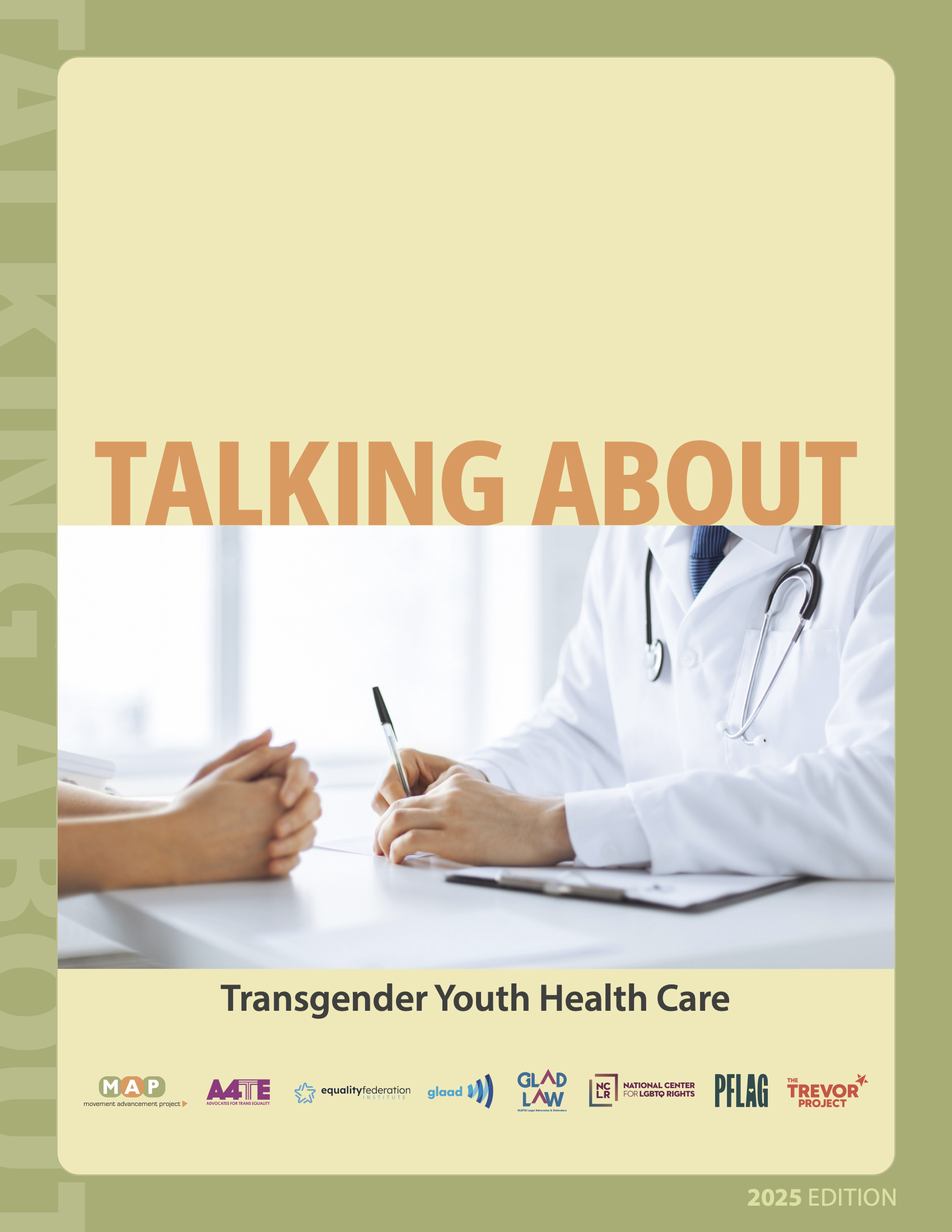The Bottom Line
Anti-LGBTQ politicians are introducing laws in an effort to make it impossible for transgender youth to receive medical care related to their gender identity. These medical care bans irreparably harm transgender youth. Decisions about this care, which is essential to the well-being of transgender youth, should rest with physicians, parents, and the patient—not politicians.
This guide provides layered approaches for conversations that can help audiences understand why this care is so vitally important for transgender youth, and why banning it is so harmful.
Talking About Transgender Youth Health CareDownload
Recommended citation:
Movement Advancement Project. March 2023 (updated September 2024). "Talking About Transgender Youth Health Care." MAP's
Talking About LGBT Issues Series.
https://www.mapresearch.org/talking-about-transgender-youth-health-care


